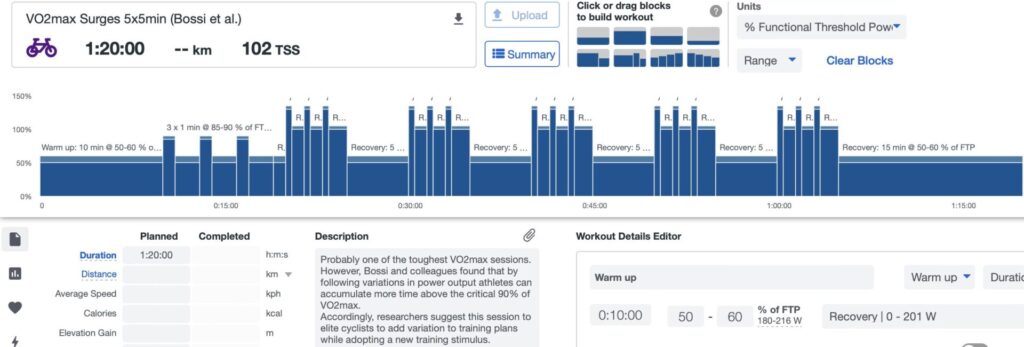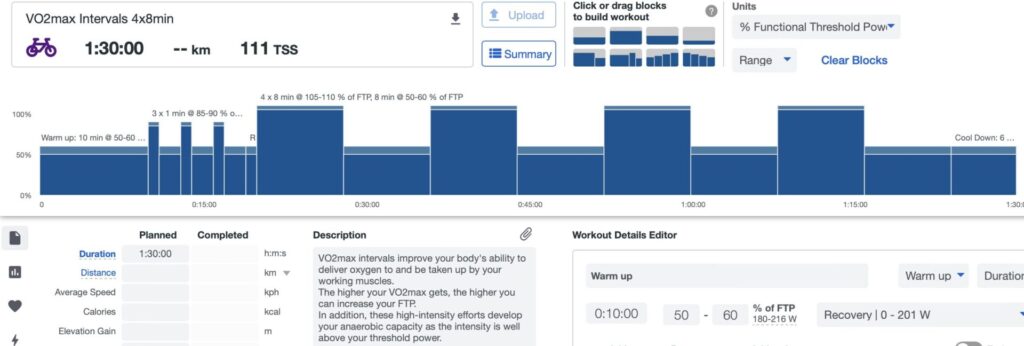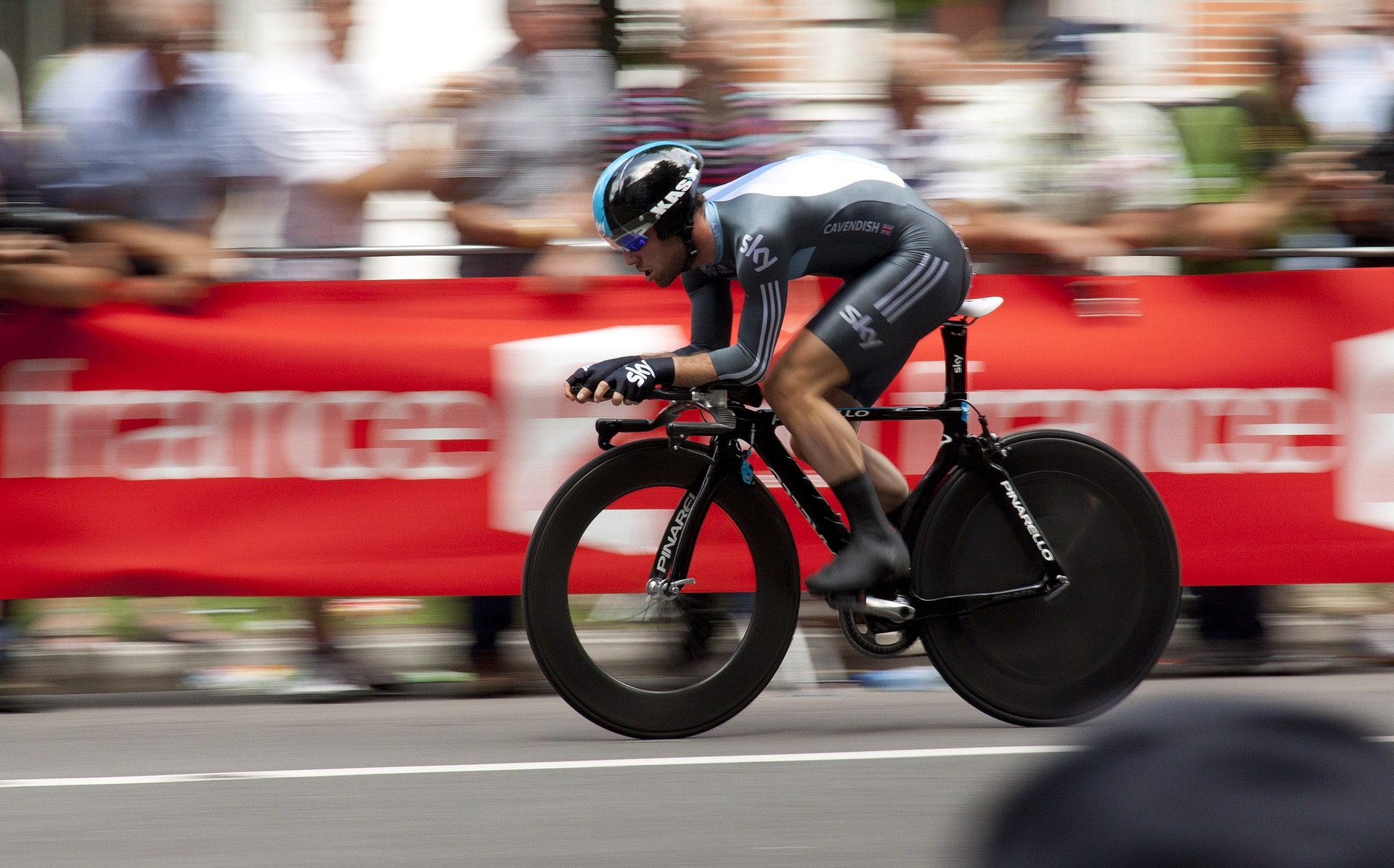Doing ineffective intervals sucks. Especially, when you try to improve your VO2max. They might be hard but don’t cause a sufficient stimulus. You get tired, but eventually not stronger or faster.
If you want to improve your VO2max, you need intervals that challenge your aerobic capacity. Although training responses to intervals differ across individuals, looking at what the science has to say is a good start.
So here are my top three well-researched and easily implementable VO2max interval sessions. We will review each and I give you my take based on my experience as a coach and an athlete.
1. Intermittent Exercise Intervals
Intermittent intervals are alternating short bursts of very high intensity with a short period of low intensity. An excellent example of these micro intervals is Billat’s 30/30 intervals.
Veronique Billat is a French physiologist. Her research about endurance performance is invaluable for our understanding of cycling training today.
Billat devoted years to figuring out more effective interval training. She started with a 3-minute interval protocol at VO2max. And finally, she progressed to what is known today as Billat 30/30 intervals.
You alternate 30 seconds at 100% VO2max with 30 seconds at 50% interval power. During the 30 seconds off your metabolism is still ramped up to VO2max for a significant amount of time. You get a 1-minute interval for just 30 seconds of effort. Try to gain 15-30 minutes total at 30-30 intervals to create a useful stimulus. You can read more about why and how to do 30/30 intervals here.
Rønnestad, however, came up with 30/15 intervals. The idea is by cutting the break to half you gain more time above 90% of VO2max or max heart rate. But, the study has limitations by comparing 3x13x30/15 with 4×5 minute intervals. That’s comparing 19.5 minutes of higher power output to 20 minutes of lower power output. Or metabolically, you compare 29.5 minutes of work with just 20 minutes of work. No surprise the 30/15s come out on top.
In my experience, some athletes have problems completing 30/15s. For example, I send some of my athletes to the lab to find their “exact” VO2max power. Afterward, they perform the 30/15s at VO2max power on the road. Sad to say, they weren’t able to complete the entire set with the prescribed power. Therefore, I suggest 30/30s should be part of every serious training plan. But of course, if the 30/15 feels fine then go for it.
How do you find the right intensity for microbursts? Well, for the 30/30s you can use your 5-minute peak power, and if the 30/15 feels problematic try to go at 95% of your 5-minute peak power.
The VO2max Microbursts: 30/30 and 30/15 Intervals

Varying your power output during HIT intervals seems like a good strategy to gain more time above 90% of your VO2max. Therefore, I’d like to introduce you to two new interval styles that might work better than constant power intervals.
2. Alternating VO2max Intervals
In two recent studies by Rønnestad and colleagues cross-country skiers had to perform 5×5 minute intervals differently. Subjects either had to go for a constant pace interval or a 90-second fast start followed by 3.5 minutes at a slightly lower power. The fast start intervals resulted in more time over 90% of VO2max and a higher VO2max peak compared to the constant intervals. Surprisingly, subjects didn’t perceive the fast start intervals harder than the constant intervals.
You might wanna try the following workout

On the other hand, a study by Bossi and colleagues compared constant 5×5 minute intervals at 84% of maximum aerobic power (MAP, about 5min peak power) to the following alternating 5×5 minute intervals in cyclists, now called Bossi intervals:
- 30sec 100% MAP
- 1min 77% MAP
- 30sec 100% MAP
- 1min 77% MAP
- 30sec 100% MAP
- 1.5min 77% MAP
The Bossi intervals resulted in higher VO2peak and more accumulated time above 90% of VO2max, 410 sec total compared to 286 sec in the constant power group. When we look at the intensity of the Bossi intervals 77% of MAP for most cyclists is around threshold. You alternate between VO2max and threshold. Due to VO2 kinetics the surges followed by threshold might cause a faster ramp up to VO2max. Additionally, from my experience my athletes like the Bossi intervals because you break up the interval in chunks, and some cyclists just hate to push a high power consistently.
However, there’s one limitation of the study. Usually, studies use a max effort approach, meaning you try to average the highest power possible across all efforts. The max-effort approach might result in a higher average power. I give you an example. My 5-minute best is 485 watts. If you take 84% you get a 408 watts target for the constant intervals. Now, when I go out and smash some 5×5 intervals I average more like 420-430 Watts across all intervals.

3. Long VO2max Intervals
The last VO2max workout I want to share with you is long intervals. Long intervals for me mean 8-10 minutes. The 8-10 minute range is well-researched in studies by Seiler and Sandbakk. On the one hand, Seiler compared the 4×8 intervals to 4×4 and 4×16 intervals. In this study, the 4×8 minute intervals came out as the clear winners in terms of a higher VO2max and a higher power at 4mmol/l blood lactate.
On the other hand, Sandbakk compared short intervals (2-4min) to long intervals (5-10min) in junior cross-country skiers. The long intervals in this study lead to an increase in VO2max and fractional utilization of VO2max at the threshold (%VO2max at FTP).
So, it seems like if you drop the intensity slightly and you go longer, you get a better training stimulus. Or to put it differently, 32 minutes at a lower intensity worked better than 4x4min at a higher intensity.

Takeaways
I think the greatest takeaway of these three VO2max sessions is that they’re all easily implementable. You can perform them outside on the road, gravel, MTB bike, or inside on Zwift, suffering through Watopia. I find the intermittent or Bossi intervals particularly helpful because you can break them up into chunks. thereby, you can suffer from one surge to the other making it mentally easier.
The point of interval training is using sessions that can be repeated forever or that you can get back to when you need them. One of my biggest values is sustainability. I’m not interested in anything that isn’t sustainable. If I can’t do it indefinitely, I’m not interested in it. The introduced sessions have helped me and my athletes improve their VO2max and 5-minute power without getting smoked. Just remember you want to include them 1-2 times weekly and make the rest of the sessions easy endurance rides.
Raise Your VO2max with my training plans
If you enjoyed this and want to improve your VO2max and 5-minute power, try my structured training plans on TrainingPeaks. My plans are based on science and results-proven practice. You can start with the plans below, including the best interval sessions to boost your VO2max. Enjoy!
- RV How to Improve Your VO2max, adaptable hours (4 Weeks)
- RV Block Periodization (4 Weeks) in 6 Hours, 10 Hours, or 15 Hours
- RV Block Periodization 2.0, 10 Hours (12 Weeks)
- RV How to Improve Your FTP, adaptable hours (4 Weeks)
- RV Road Racing Build Plan in 6 Hours, 10 Hours, or 15 Hours
Follow me on Instagram for more Cycling Content.
If you want to work with me as a coach click here.
- Get my favored Favero Assioma Duo Pedals *here.
- Get my favored Specialized S-Works Torch Shoes *here.
- Get the Vittoria Corsa Tyres I use *here.
Get the Newsletter
Receive pragmatic cycling advice, great ideas, and inspiring stories that will make you a better athlete delivered to your inbox each week.
Resources
Dr. Veronique Louise Billat: https://www.researchgate.net/profile/Veronique-Billat
Billat intervals: the magic bullet for your next PB? https://www.sportsperformancebulletin.com/endurance-training/high-intensity-training/billat-intervals-magic-bullet-next-pb/
Interval training at VO2max: effects on aerobic performance and overtraining markers: https://pubmed.ncbi.nlm.nih.gov/9927024/
Optimizing Interval Training Through Power-Output Variation Within the Work Intervals
Increasing Oxygen Uptake in Cross-Country Skiers by Speed Variation in Work Intervals.
Adaptations to aerobic interval training: interactive effects of exercise intensity and total work duration
Effects of Intensity and Duration in Aerobic High-Intensity Interval Training in Highly Trained Junior Cross-Country Skiers
Increasing Oxygen Uptake in Well-Trained Cross-Country Skiers During Work Intervals With a Fast Start
Ad Hint for Asterisk Links
*Asterisks are affiliate links from services and gear I use and love. If you take action (i.e. make a purchase) I’ll earn some coffee money which I promise to drink while you enjoy the content and offers. You don’t pay a higher price.
